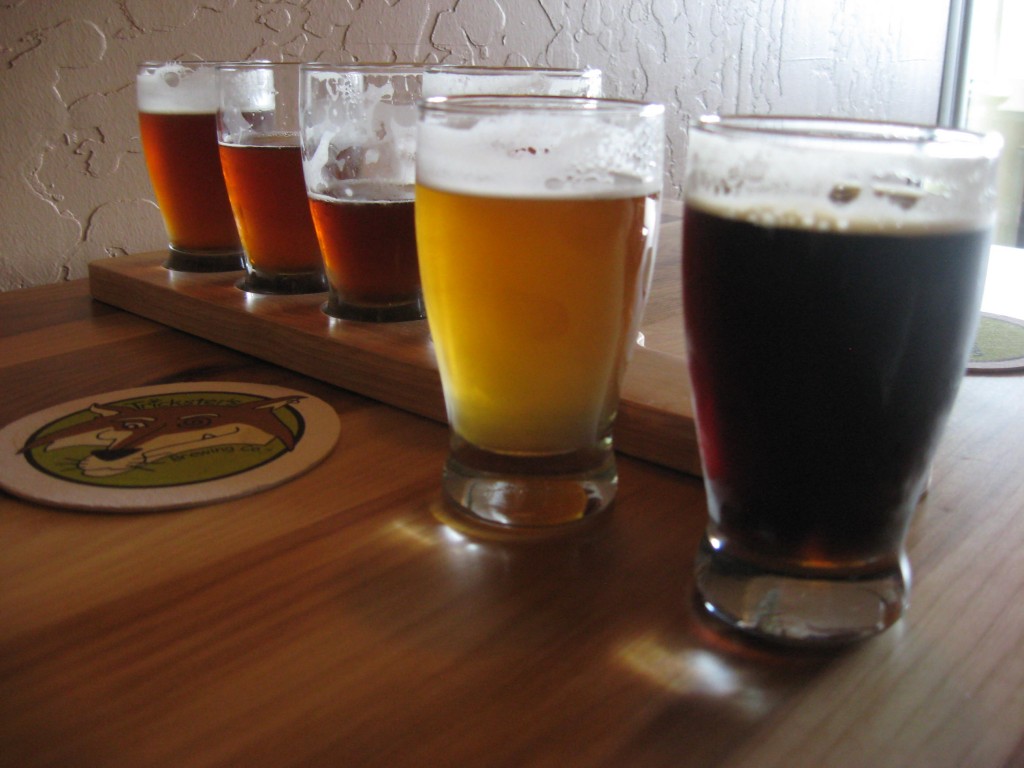Profiled by Ken Carman
 This is one of the most interesting lighter beers I’m had that is not dominated by spices, or darker malts, or hops. Sweetwater’s blurb claims it was a Pilsner that “blew a tire” and wound up being finished up with an ale yeast. The nose is lager yeast, but there;s something else there, just a slight diacetyl sense you might get with some ales. Not enough to be bothersome.
This is one of the most interesting lighter beers I’m had that is not dominated by spices, or darker malts, or hops. Sweetwater’s blurb claims it was a Pilsner that “blew a tire” and wound up being finished up with an ale yeast. The nose is lager yeast, but there;s something else there, just a slight diacetyl sense you might get with some ales. Not enough to be bothersome.
Pours with a nice head. Straw. Chill haze: I suspect it needs clarification except…
 Mouthfeel is the first indication of something amazing that has been brewed with a simple application of two yeasts: carbonation/carbonic buzz supporting a nice firm bitter that clings to the roof of the mouth. Very satisfying. Malt low but more than adequate for all that’s going on here.
Mouthfeel is the first indication of something amazing that has been brewed with a simple application of two yeasts: carbonation/carbonic buzz supporting a nice firm bitter that clings to the roof of the mouth. Very satisfying. Malt low but more than adequate for all that’s going on here.
The flavor is refreshing, fruity, malt focus yet with a nice bitter background. Reminds me a bit of an alcoholic Clausthaler… an NA. This is no NA, but could qualify as lawnmower. It’s also a bit wine like, in a sense. Fruity and clean lager combine to provide almost a bubbly wine sense without the alc punch or even actual fruit” slight champagne but more a lightly carbonated Rhine wine with a slight acidic punch one might get from grapes, or lager yeast.
Impressive.

















 In the early part of the 20th Century, beer drinkers had only two choices when it came to quenching their thirst for a delicious frothy beverage: draught beer or bottles. It wasn’t until the 1930s that canned beer arrived on the scene. Initially, tin cans could not withstand the carbonated pressure and burst. Eventually, technological developments and the introduction of a vinyl liner proved successful in containing the pressure. Then in 1935, Kruger’s Brewery of New Jersey
In the early part of the 20th Century, beer drinkers had only two choices when it came to quenching their thirst for a delicious frothy beverage: draught beer or bottles. It wasn’t until the 1930s that canned beer arrived on the scene. Initially, tin cans could not withstand the carbonated pressure and burst. Eventually, technological developments and the introduction of a vinyl liner proved successful in containing the pressure. Then in 1935, Kruger’s Brewery of New Jersey
You must be logged in to post a comment.